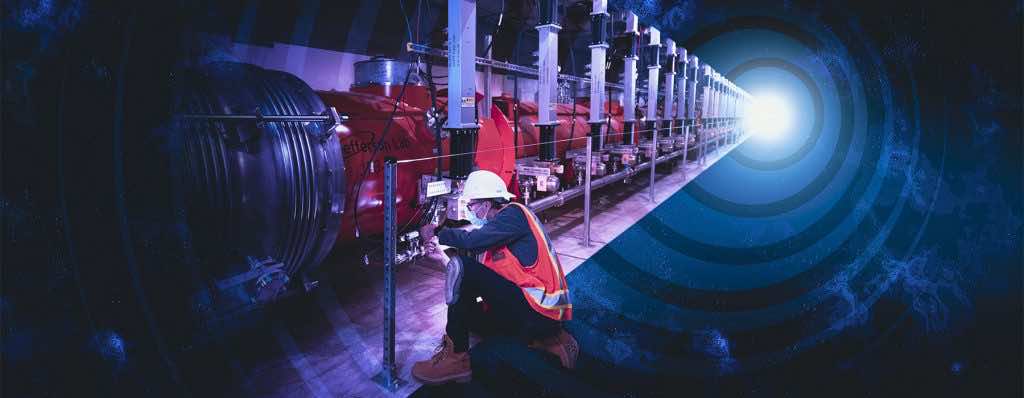A half-mile-long tunnel 30 feet below Menlo Park, California, is colder than outer space. It includes a new superconducting particle accelerator as part of an upgrade project to the Department of Energy’s SLAC National Accelerator Laboratory’s Linac Coherent Light Source (LCLS) X-ray free-electron laser.
The scientists succeeded in cooling the accelerator to minus 456 degrees Fahrenheit (or 2 Kelvin). At that point, it becomes superconducting and can boost electrons to high energies with almost little energy loss. It’s one of the last steps before LCLS-II produces X-ray pulses 10,000 times brighter on average than LCLS and arriving at up to a million times per second, a world record for today’s most powerful X-ray light sources.
“In just a few hours, LCLS-II will produce more X-ray pulses than the current laser has generated in its entire lifetime,” says Mike Dunne, director of LCLS.
“Data that once might have taken months to collect could be produced in minutes. It will take X-ray science to the next level, paving the way for a whole new range of studies and advancing our ability to develop revolutionary technologies to address some of the most profound challenges facing our society.”
In 2009, LCLS, the world’s first hard X-ray free-electron laser (XFEL), turned on for the first time, emitting X-ray pulses a billion times brighter than anything else. It drives electrons via a copper pipeline at room temperature but only at 120 X-ray pulses per second.
The LCLS-II works by creating electrons, which are then sped down a long pipe before encountering an “undulator,” which causes them to waver and generate X-rays.
Earlier, electrons were shot down a copper pipe at average temperature, but LCLS-II employs 37 cryomodules to cool the apparatus to -271 °C (-456 °F) above absolute zero. This is possible by pumping liquid helium cooling from two huge helium cryoplants into the modules.
The niobium metal cavities within the modules become superconducting at such low temperatures, enabling electrons to pass through with no resistance. Microwaves generate an induced electromagnetic field that resonates within these cavities, matching with moving electrons to transfer energy. This increased energy accelerates the electrons, so they begin to move at almost the speed of light.
The electrons are then routed via undulators, which use strong magnets to force them sideways and cause them to emit X-rays. The new undulators can produce both “hard” and “soft” X-rays for various applications.
The apparatus itself is ready to be tested. This year, the LCLS-II will begin releasing X-rays. In addition, the facility is expected to provide additional perspectives on various science fields, including chemistry, biology, and quantum physics.
Source: Stanford SLAC Lab

